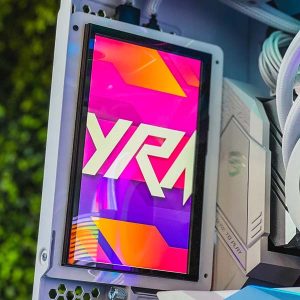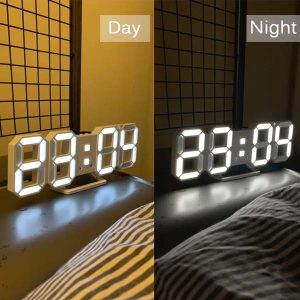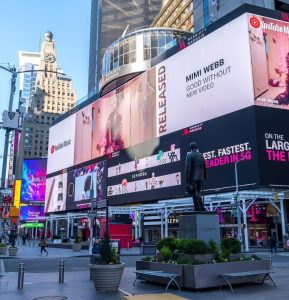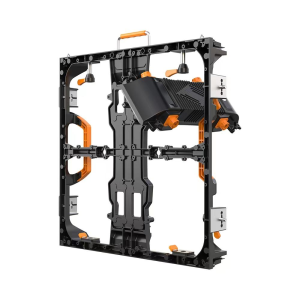In the current context of the growing demand for digital displays, indoor LED displays, with their excellent performance and diverse functions, have become the cornerstone of the indoor visual display field. From high – end and elegant conference rooms, to bustling shopping mall exhibition halls, and cozy home spaces, indoor LED displays are reshaping people’s visual experiences in a unique way, providing strong support for information dissemination and scene creation. Next, let’s explore the unique charm of indoor LED displays in depth.
What is an Indoor LED Display?
Anindoor LED displayis a display device that uses light – emitting diodes (LEDs) as its core light – emitting elements and is specifically designed for indoor environments. It consists of a large number of tiny, high – brightness LED lamp beads precisely arranged to form a pixel matrix. By controlling the on – off and luminous colors of different lamp beads, it can clearly display various types of information such as text, images, and videos. In terms of hardware construction, high – quality lamp beads and a stable drive circuit are selected to ensure long – term stable operation with no flicker or motion blur on the screen. At the same time, it is equipped with an efficient heat – dissipation system to deal with the heat generated during long – term indoor use, safeguarding the device’s performance. In terms of appearance design, it focuses on integrating with the indoor environment, featuring a thin, light, and delicate casing that can be flexibly adapted to various installation scenarios, such as wall – mounting, ceiling – hanging, and inlaying.
Characteristics of Indoor LED Displays
High Definition and Exquisite Picture Quality: With a high pixel density, it can present extremely clear and delicate visual effects. Whether it’s displaying complex data charts, beautiful product images, or playing high – definition videos, it can accurately reproduce every detail, bringing the audience an immersive visual experience and meeting the stringent requirements of close – range indoor viewing.
Rich Colors and High Contrast: It has a wide color gamut range, enabling it to accurately reproduce the rich and diverse colors in nature, making the pictures vivid, bright, and lifelike. The high – contrast technology further enhances the layering and three – dimensionality of the pictures, making the bright parts more dazzling and the dark parts deeper and purer, greatly enhancing the visual impact and making the displayed content more eye – catching.
Stability and Reliability: After undergoing strict quality inspections and aging tests, and using high – quality raw materials and advanced manufacturing processes, it exhibits excellent stability and reliability. It can operate continuously and stably in long – term, high – intensity usage environments, with a long average time between failures, reducing maintenance costs and downtime, and providing a solid guarantee for information display in various indoor scenarios.
Flexible Customization and Easy Installation: It can be flexibly customized according to the size, shape, and usage requirements of different indoor spaces. Whether it’s a regular rectangular large – screen or a special – shaped screen to meet specific design needs, it can be easily achieved. Moreover, with a modular design, the installation process is simple and convenient, allowing for quick setup and effectively saving installation time and labor costs.
Applications of Indoor LED Displays
Corporate Office and Conference Scenarios: In corporate conference rooms, training rooms, and other office spaces, indoor LED displays are the ideal choice for presenting conference materials, data reports, training courseware, etc. Their clear display and convenient operation facilitate information exchange and discussion among participants, significantly improving the efficiency of meetings and communication, and contributing to the efficient operation of enterprises.
Commercial Display and Retail Spaces: Commercial venues such as shopping malls, specialty stores, and brand flagship stores use indoor LED displays to showcase product information, promotional activities, brand images, etc., attracting customers’ attention and stimulating their purchasing desire. By playing dynamic and beautiful advertising videos and product displays, they create an appealing shopping atmosphere, effectively increasing sales and brand awareness.
Cultural Exhibitions and Art Venues: In cultural and art venues such as museums, art galleries, and exhibition halls, indoor LED displays are used to display exhibit introductions, historical and cultural materials, interpretations of art works, etc., enriching the exhibition forms and enhancing the visitors’ experience. Through vivid pictures and multimedia displays, they help the audience better understand and appreciate the cultural connotations behind the exhibits, enabling the wider dissemination of culture and art.
Home Entertainment and Smart Homes: With the continuous improvement of people’s pursuit of home – living quality, indoor LED displays are gradually entering households. As the core device of a home theater, it brings users a stunning audio – visual experience, allowing people to enjoy a cinema – like viewing experience at home. In addition, it can be integrated with a smart home system to achieve centralized control of devices such as lights, curtains, and home appliances, adding more convenience and a sense of technology to home life.
Precautions for Indoor LED Displays
Installation Environment and Location Selection: Before installation, fully consider the temperature, humidity, ventilation, etc., of the indoor environment to ensure that the display operates in a suitable environment. Choose an appropriate installation location, taking into account both the viewing angle and distance to ensure that the audience can obtain the best viewing experience. At the same time, ensure that the installation is firm to prevent the display from falling and getting damaged due to accidental collisions.
Daily Maintenance and Upkeep: Regularly clean the display. Use a soft cleaning cloth and a dedicated cleaning agent to gently wipe the screen surface to remove dust and stains, keeping the display picture clear. Regularly check the connection cables, power system, and drive module of the display to ensure the normal operation of the device. If problems such as loose cables or component aging are found, they should be repaired or replaced in a timely manner.
Content Management and Compliance: Strictly abide by relevant laws, regulations, and industry standards to ensure that the display content is legal, compliant, and healthy. Establish a complete content review mechanism to avoid displaying false, illegal, vulgar, or infringing information. Reasonably arrange the playing time and frequency of the content to avoid causing visual fatigue or interference to the audience.
Indoor LED displays, with their excellent performance, wide range of applications, and outstanding visual effects, have become an essential part of modern indoor spaces. With the continuous progress and innovation of technology, they will continue to bring more wonderful visual experiences in the future, injecting new vitality into the development of the indoor visual display field and helping various industries achieve better development in the digital age.
How to Choose an Indoor LED Display
Display Effect
Resolution: Resolution is related to the clarity of the picture. For close – range viewing scenarios such as conference rooms and small exhibition halls, it is recommended to choose products with a pixel pitch of P2 or less, such as P1.5, P1.2, etc. The smaller the number, the higher the pixel density, and the more refined the picture, which can clearly display complex charts and text.
Brightness: Although the indoor lighting is relatively stable, there are still differences in different places. For ordinary offices and conference rooms, a brightness of 1000 – 2000 cd/㎡ is sufficient. However, for shopping mall atriums and large exhibition halls with complex lighting, a brightness of over 3000 cd/㎡ may be required to ensure that the picture is clearly visible in all lighting conditions.
Contrast: High contrast can enhance the layering of the picture. Generally, for indoor LED displays, a contrast ratio of 3000:1 or higher can make the bright parts of the picture more vivid, the dark parts deeper, and the color transition more natural, providing a stronger visual impact when displaying pictures and videos.
Color Reproduction: Measured by the NTSC color gamut value, an excellent indoor LED display can reach an NTSC color gamut of over 80%, which can accurately reproduce various colors, making the displayed content rich and true in color.
Product Quality
LED Lamp Beads: Lamp beads are the core components of the display. Lamp beads from well – known brands such as Nationstar Optoelectronics and Sanan Optoelectronics perform better in terms of luminous efficiency, stability, and lifespan. They can reduce the probability of dead pixels and ensure long – term stable display.
Driver Chips: Good driver chips ensure the stable operation of the display. Chips from companies like Novatek have the characteristics of low power consumption and high refresh rate, which can eliminate flicker and motion blur on the screen, improving the display effect.
Protection Performance: Although the indoor environment is not harsh, dust – proof and moisture – proof should be considered. Choose a display with a certain protection level, such as above IP30, which can effectively prevent the intrusion of dust and moisture and extend the service life.
Functional Requirements
Installation Method: Choose according to the installation environment. The wall – mounted method is suitable for spaces with flat walls; the ceiling – hung method is suitable for large places with high ceilings; the floor – standing method is easy to move and can be adjusted at any time.
Intelligent Functions: If there are requirements such as remote control and timed content update, choose a display with an intelligent control system. It can be conveniently managed through a mobile phone or computer, improving the convenience of use.
Splicing Function: When a large – size display is needed, a display with a seamless splicing function is preferred. The splicing gap is small, and the spliced picture is complete without breaks, providing a good overall visual effect.
Budget Consideration
Cost – effectiveness: Within the budget, comprehensively compare the performance of different brands and models. Don’t just choose low – priced products based on price, nor blindly pursue high – end ones. Select a display whose performance meets your needs and has a reasonable price to maximize cost – effectiveness.
About Us
KSSDISPLAYis a professional LED display integrated solution provider. We are engaged in the research, sales, and service of Harley Di fixed LED displays, outdoor fixed – billboard LED displays, and indoor and outdoor rental LED displays. We offer a wide variety of indoor transparent LED screens. If you are interested, you can contact us for inquiries and price quotes.





